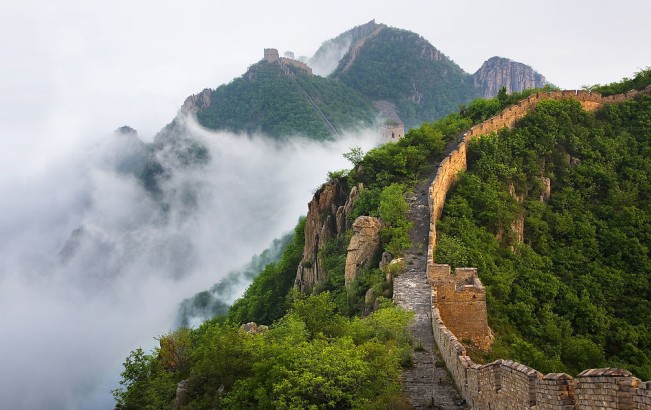The Tower of oriental Pearl TV is located in the Pudong Park at Ljuiazui in Shanghai. This tower is surrounded by Yangpu Bridge in the northeast and Nanpu Bridge in the southwest side creating a picture like the twin dragons playing with the pearls. This place has photographic jewels of excitement and imagination which attracts hundreds of visitors.
It is about 470 meters in height and third tallest TV and radio tower of the world surpassed in height only by the towers of Toronto, Moscow and Canada. It is not only the height but the unique architectural design makes it one of the most attractive places to see. It is supported by the three seven meter wide base slanting stanchions. It surrounds the eleven steel spheres which are strung vertically to the center of the tower and there are three nine meters wide columns. This tower also has three sphere including a top sphere which is called space module. Five smaller spheres and three decorative spheres are also there on the base of the tower. This entire structure is build on the green grassland giving it a appearance like the pearls shining on the jade plate.
You can travel up and down in the tower using double decor elevator which can hold up to fifty people. The attendant in elevator will recite the introduction to TV tower in English and Chinese during the ascent. You will be amazed to see the various activities available on the various columns and spheres which house of recreation, interest and commerce, once you reach the destination. The inner tower is the recreational palace and the Shanghai Municipal History Museum is located at the pedestal of the tower. There is futuristic space city in the large lower sphere and a fabulous sightseeing hall. You can also get a view of the way to the Yangtze River on a clear day. The base of this tower is the home to science fantasy city. The five smaller spheres are the hotel which contains 25 elegant lounges and rooms. The pears at the top contain restaurants including a rotating one, shops and a floor for sightseeing. You can also take a view of the Shanghai from this height and it will fill you with the wonders of beauty.
This tower is an amazing ultra modern tower which combines the ancient concept of spherical pearls and technology, recreation education, commerce and conference facilities of 21st century. The TV and radio tower provides the services in the Shanghai area having nine TV channels and ten FM radio channels.





















